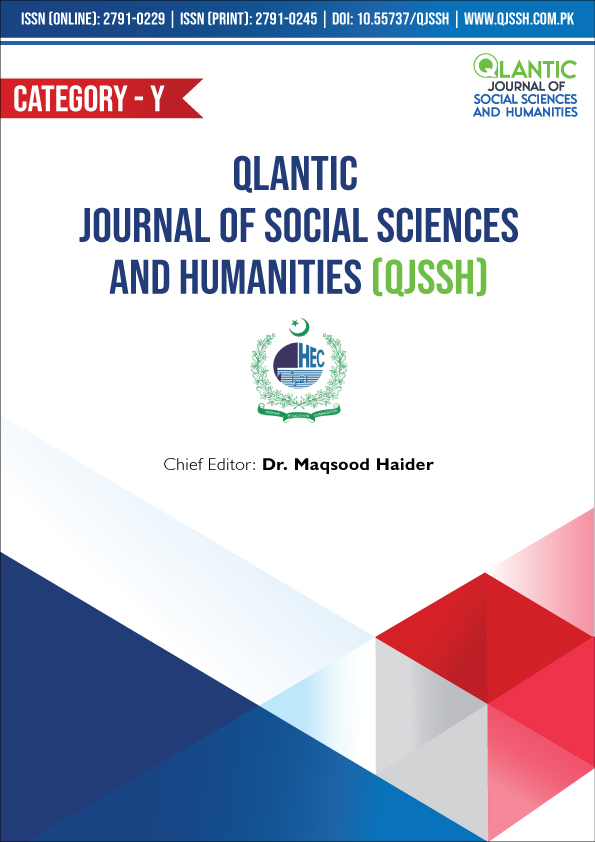Impact of High-Intensity Interval Training on Performance among National-Level Female Jumpers
DOI:
https://doi.org/10.55737/qjssh.vi-i.25336Keywords:
High-Intensity Interval Training, Standing Long Jump, Vertical Jump, Sprinting, Female AthletesAbstract
High-intensity interval Training (HIIT) is regarded as an effective workout strategy designed to enhance various aspects of athletic traits, especially in explosive jump and sprint activities. The goal of this study was to assess the effect of HIIT on the performance of national-level female jumpers, focusing on three benchmarks: The Standing Long Jump (SLJ), Vertical Jump (VJ), and 30-meter sprint. One group performed HIIT, while the control group followed their previous training schedule. All participants were tested before and after the training; statistically significant improvements were seen in the experimental group. In the controlled group, SBJ distance showed the greatest improvement with a pre-test average of 1.93 meters and a post-test average of 2.38 meters, while vertical jump demonstrated significant SBJ height improvement with a pre-test of 2.01 meters and a post-test of 3.48 meters while sprinting 30m in 4.83 seconds pre-test and 3.60 seconds post-test. Explosive strength, speed, and power were enhanced significantly targeted by HIIT as evidenced by the statistical analysis performed, which showed large effect sizes. The control group also showed improvements, though at a noticeably lower rate than the experimental group, reinforcing the greater effectiveness of HIIT. With regard to the results, it is reasonable to conclude that HIIT presents additional benefits to female athletes with regard to training focusing on explosive actions and sprinting speed.
References
Astorino, T. A., Allen, R. P., Roberson, D. W., & Jurancich, M. (2012). Effect of high-intensity interval training on cardiovascular function, VO2 max, and muscular force. Journal of Strength and Conditioning Research, 26(1), 138-145. https://doi.org/10.1519/JSC.0b013e318218dd77
Bishop, D., Jones, E., & Woods, D. R. (2008). Recovery from training: A brief review. Journal of Strength and Conditioning Research, 22(3), 1017–1024. https://doi.org/10.1519/JSC.0b013e31816eb518
Bouchard, C., Blair, S. N., & Haskell, W. L. (2007). Physical activity and health (Vol. 1). Champaign, IL: Human Kinetics.
Buchheit, M., & Laursen, P. B. (2013). High-intensity interval training, solutions to the programming puzzle. Sports Medicine, 43(5), 313-318. https://doi.org/10.1007/s40279-013-0029-x
Cheung, K., Hume, P., & Maxwell, L. (2003). Delayed onset muscle soreness: Treatment strategies and performance factors. Sports Medicine, 33(2), 145–164. https://doi.org/10.2165/00007256-200333020-00005
Cohen, J. (1988). Statistical power analysis for the behavioural sciences (2nd ed.). Erlbaum.
Faiss, R., Leger, B., & Bucheit, M. (2013). The effects of a short-term sprint interval training on 30-m sprint performance. European Journal of Applied Physiology, 113(3), 707-714. https://doi.org/10.1007/s00421-012-2471-2
Gibala, M. J., Little, J. P., MacDonald, M. J., & Hawley, J. A. (2012). Physiological adaptations to low-volume, high-intensity interval training in health and disease. Journal of Physiology, 590(5), 1077–1084. https://doi.org/10.1113/jphysiol.2011.224725
Hewett, T. E., Myer, G. D., & Ford, K. R. (2006). Reducing knee and anterior cruciate ligament injuries among female athletes: A systematic review of neuromuscular training interventions. Journal of Knee Surgery, 18(1), 82-88. https://doi.org/10.1055/s-0030-1248041
Hicks, A. L., McMaster, W. C., & Martin, T. P. (2013). The effects of high-intensity interval training on physical performance in women. Journal of Strength and Conditioning Research, 27(3), 746–755. https://doi.org/10.1519/JSC.0b013e31827b62d7
Issurin, V. B. (2010). New horizons for the methodology and physiology of training periodization. Sports Medicine, 40(3), 189–206. https://doi.org/10.2165/11319770-000000000-00000
Jenkins, N. D., McDonald, M. J., & Kilgore, L. L. (2013). High-intensity interval training and its effect on neuromuscular adaptations in women. European Journal of Sports Science, 13(1), 34–41. https://doi.org/10.1080/17461391.2012.673307
Khan, A., Saddique, U., & Iqbal Butt, M. Z. (2024). Alteration of Human Growth Hormones Associated with Moderate Intensity Exercises among Female Students. THE SKY-International Journal of Physical Education and Sports Sciences (IJPESS), 8(2), 78–82. https://doi.org/10.51846/the-sky.v8i2.3882
Jung, M. E., Bourne, J. E., & Little, J. P. (2014). Where does HIT fit? An examination of the affective response to high-intensity intervals in comparison to continuous moderate- and continuous vigorous-intensity exercise in the exercise intensity-affect continuum. PLoS ONE, 9(12), e114541. https://doi.org/10.1371/journal.pone.0114541
Laursen, P. B., & Jenkins, D. G. (2002). The scientific basis for high-intensity interval training: Optimizing training programs and maximizing performance in highly trained endurance athletes. Sports Medicine, 32(1), 53–73. https://doi.org/10.2165/00007256-200232010-00004
Riaz, J., Ma, K., Sharif, N., & Batool, N. (2024). Effects of Aerobic Strength Training on Physical Fitness and Weight Loss of Female University Students. THE SKY-International Journal of Physical Education and Sports Sciences (IJPESS), 8(2), 63–71. https://doi.org/10.51846/the-sky.v8i2.3881
Wisloff, U., Stoylen, A., Loennechen, J. P., & et al. (2004). Superior cardiovascular effect of aerobic interval training versus moderate continuous training in heart failure patients: A randomized study. Circulation, 109(23), 2762-2768. https://doi.org/10.1161/01.CIR.0000122124.36135.03
Downloads
Published
Issue
Section
License

This work is licensed under a Creative Commons Attribution-NonCommercial 4.0 International License.





